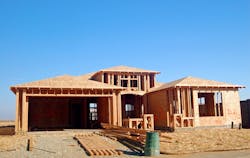Single-Family Starts Fall to Two-Year Low as Construction Costs Rise, Demand Softens
Prolonged supply-chain delays, rising interest rates, and elevated construction costs have created a roadblock for single-family starts in a market desperate for new inventory. Single-family starts decreased 8.1% in June to a 982,000 seasonally adjusted annual rate, the slowest pace of new housing starts since June 2020, NAHB Eye on Housing reports. As a result, single-family builder confidence fell a staggering 12 points to a level of 55, a sharp drop from the November 2020 peak of 90 basis points.
As housing demand continues to fall amid runaway inflation and constant price gains, the home building sector could see an even slower pace of new construction in the months ahead, but the number of single-family units currently under construction but not yet completed offers some hope for homebuyers.
As an indicator of the economic impact of housing and as a result of accelerating permits and starts in recent quarters, there are now 824,000 single-family homes under construction. This is 21% higher than a year ago. There are currently 856,000 apartments under construction, up 24% from a year ago. Total housing units now under construction (single-family and multifamily combined) is 24% higher than a year ago. The number of single-family units in the construction pipeline is now peaking for this business cycle and will decline in the months ahead given recent declines in buyer traffic.
